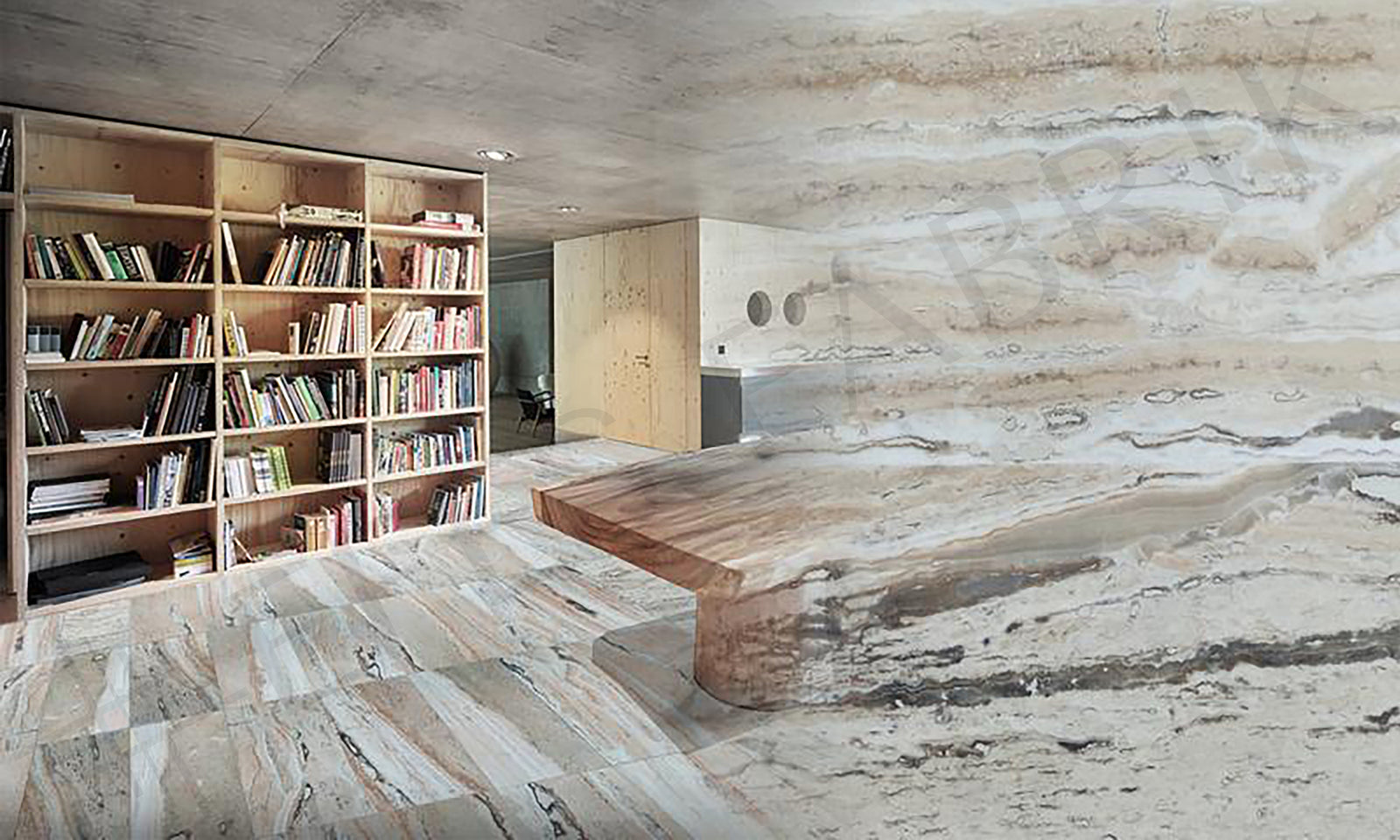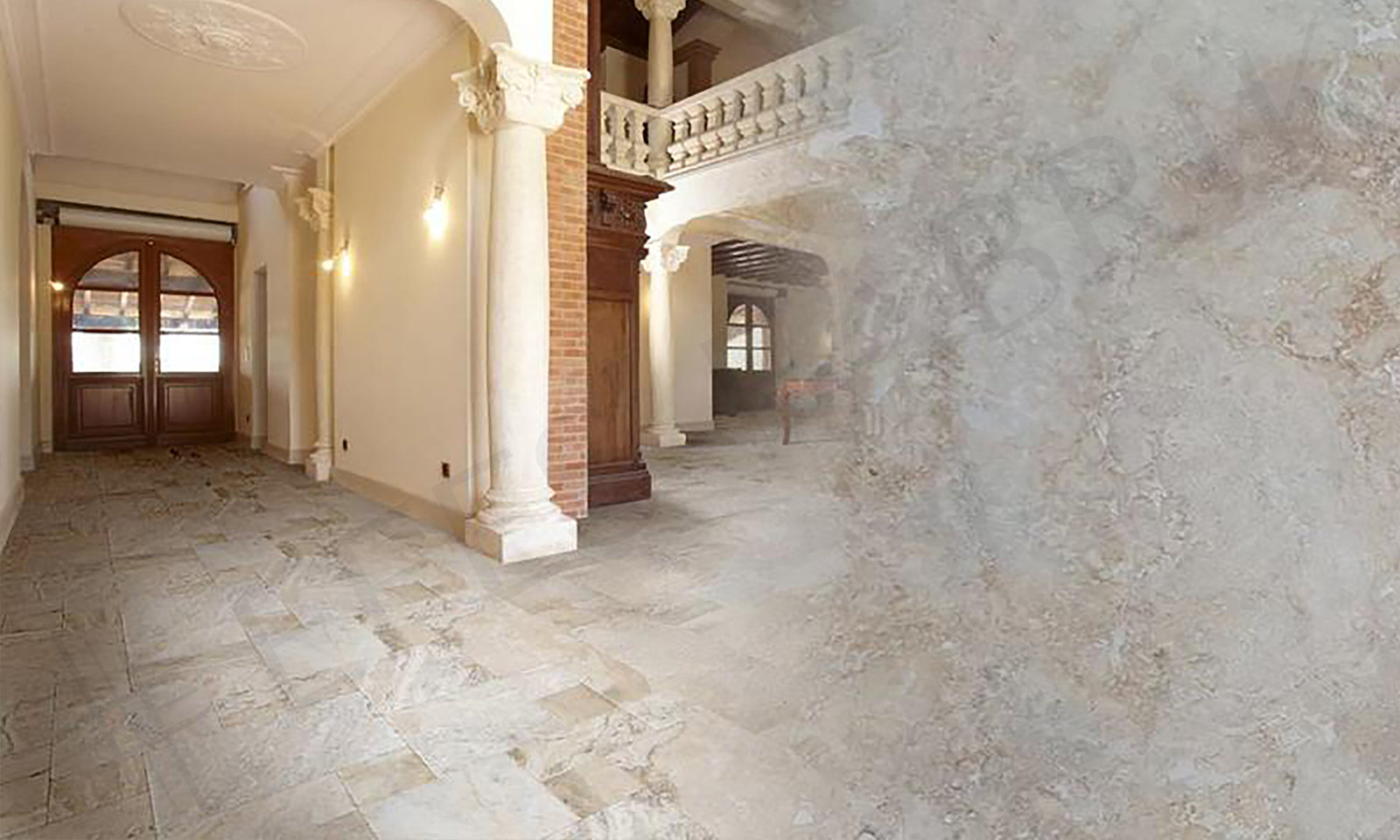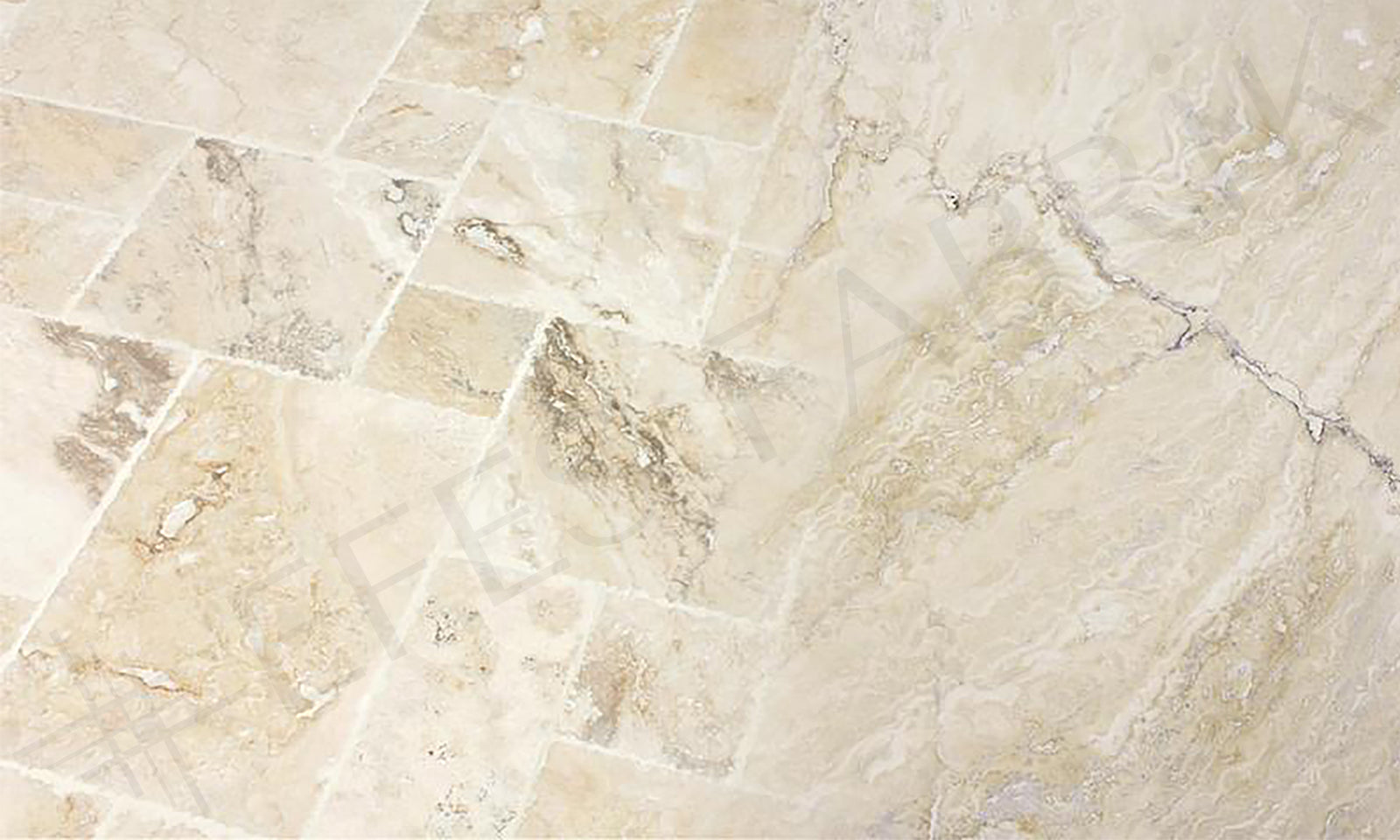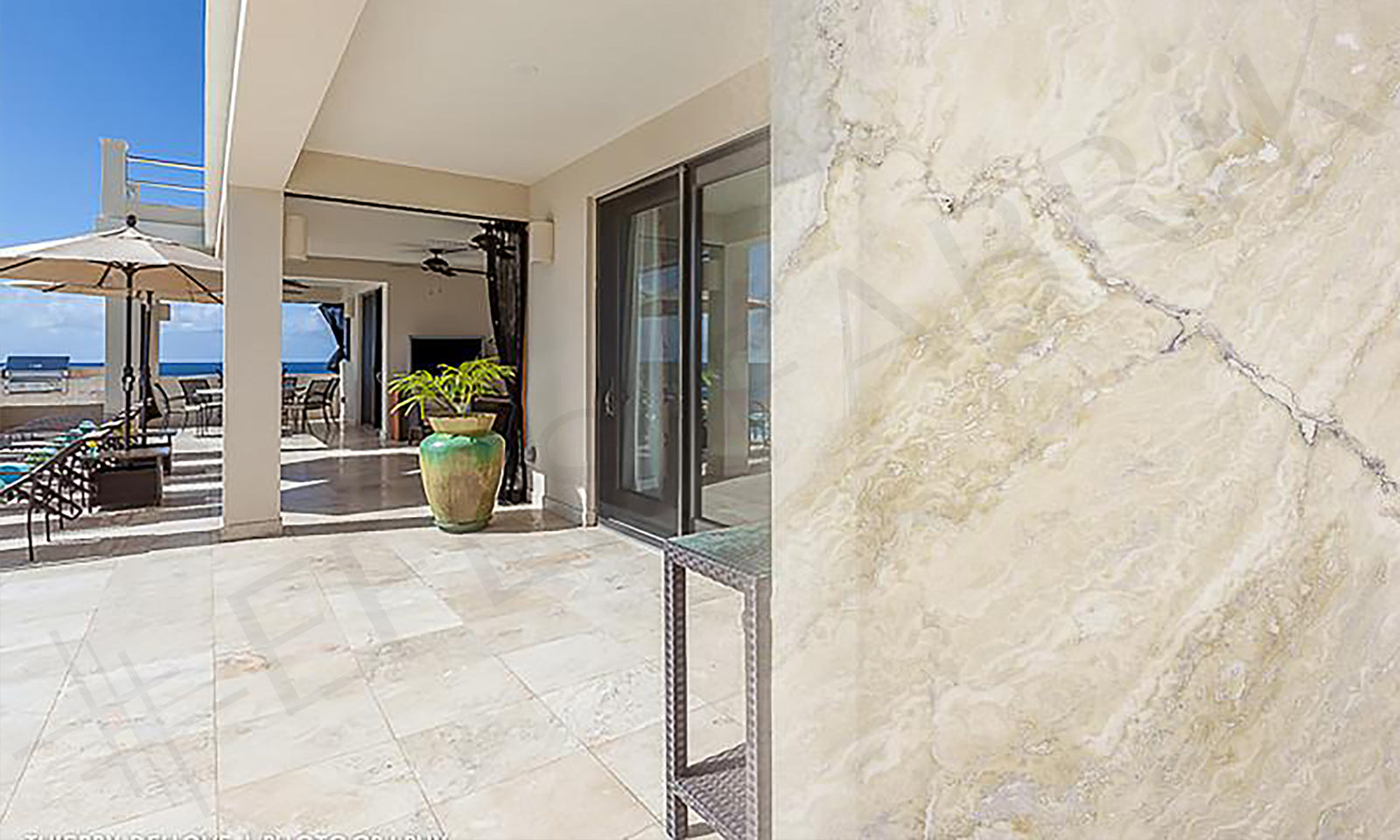TRAVERTINE
What is Travertine?
Travertine; It is a chemical sedimentary stone formed as a result of the precipitation of calcium carbonate minerals in cave cavities or places where thermal groundwaters with calcium bicarbonate rise to the surface. They are long-lasting, do not require maintenance, it will be enough to clean them from time to time without exposing them to chemical products. The travertine surface is perforated and light like a sponge. One of the biggest advantages of this stone, which has a perforated and veined structure, is that it is non-slip. Usage areas can be listed as interior and exterior decoration, stairs, pool, home, office, kitchen, bathroom, hotel, bar, school, shop, cafe, restaurant, wet area, hospital, laundry room, corridor, cellar, covered terrace, etc. Travertine Surface & Edge Application Types Honed: Making the surfaces of travertine products semi-matt is called honing. Honed surfaces add satiny texture. Polished: The process that ensures the travertine tile surface has a smooth and shiny surface is called polishing. Brushed: The process that provides the texture of the travertine tile surface is called brushing. Chiseled Edge: The process of acquiring an antique, aged appearance and texture of the edges of the travertine tile surface is called edge breaking. Tumbled: Supporting the old appearance of the travertine tile surfaces, formed by the erosion that has been naturally exposed over the years, also by mechanical means is called aging-tumbling. Filling: Filling the cavities or pores naturally found on the travertine tile surface with special travertine cement or special ready-made filling materials is called filling.






